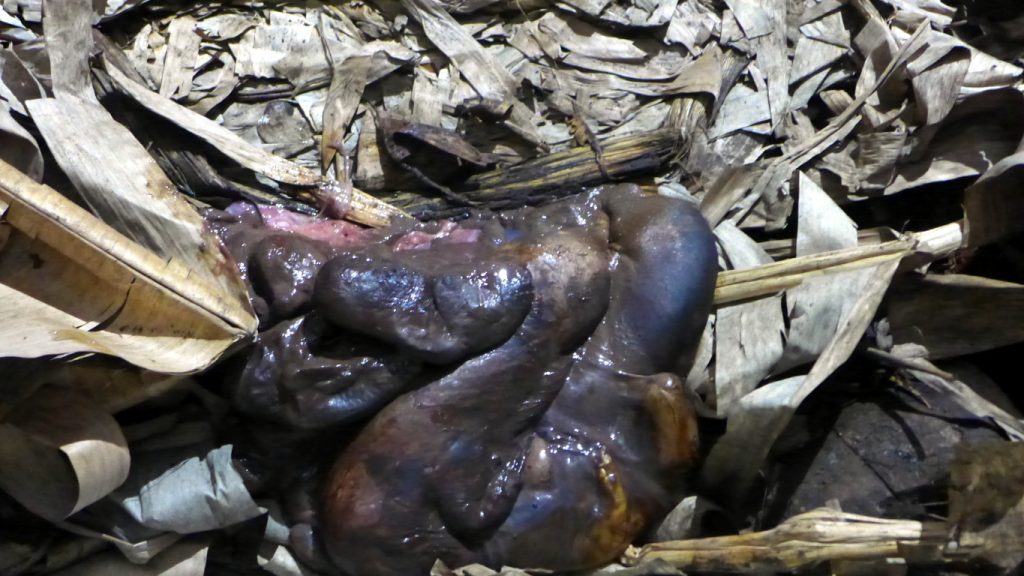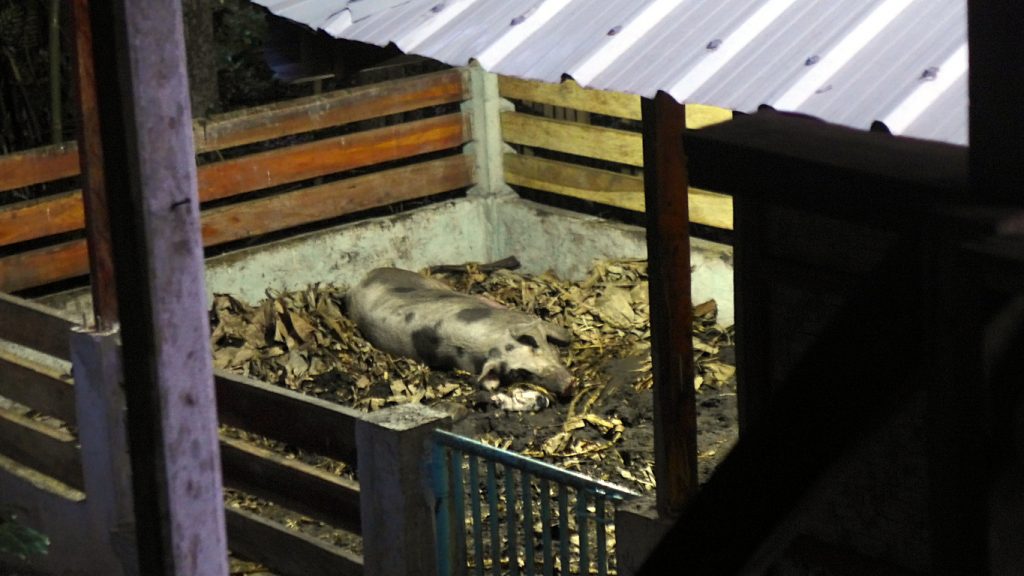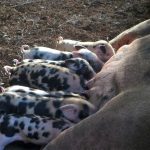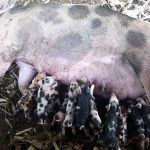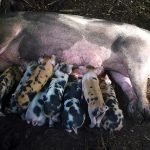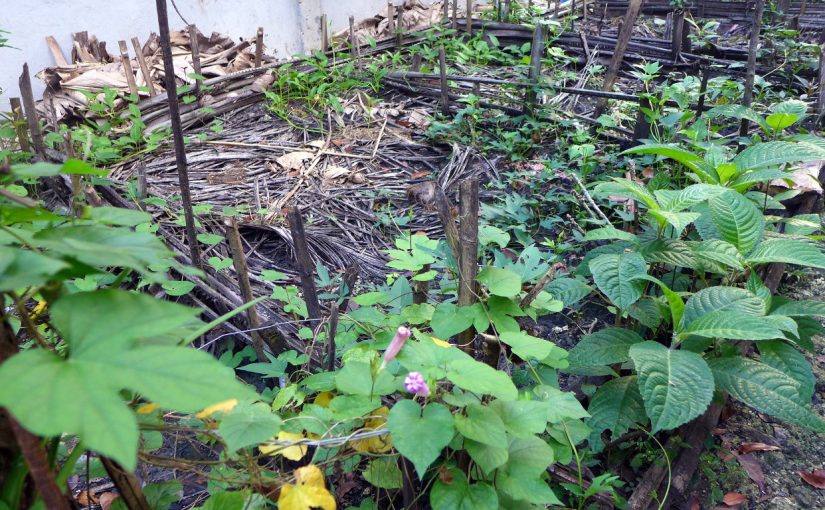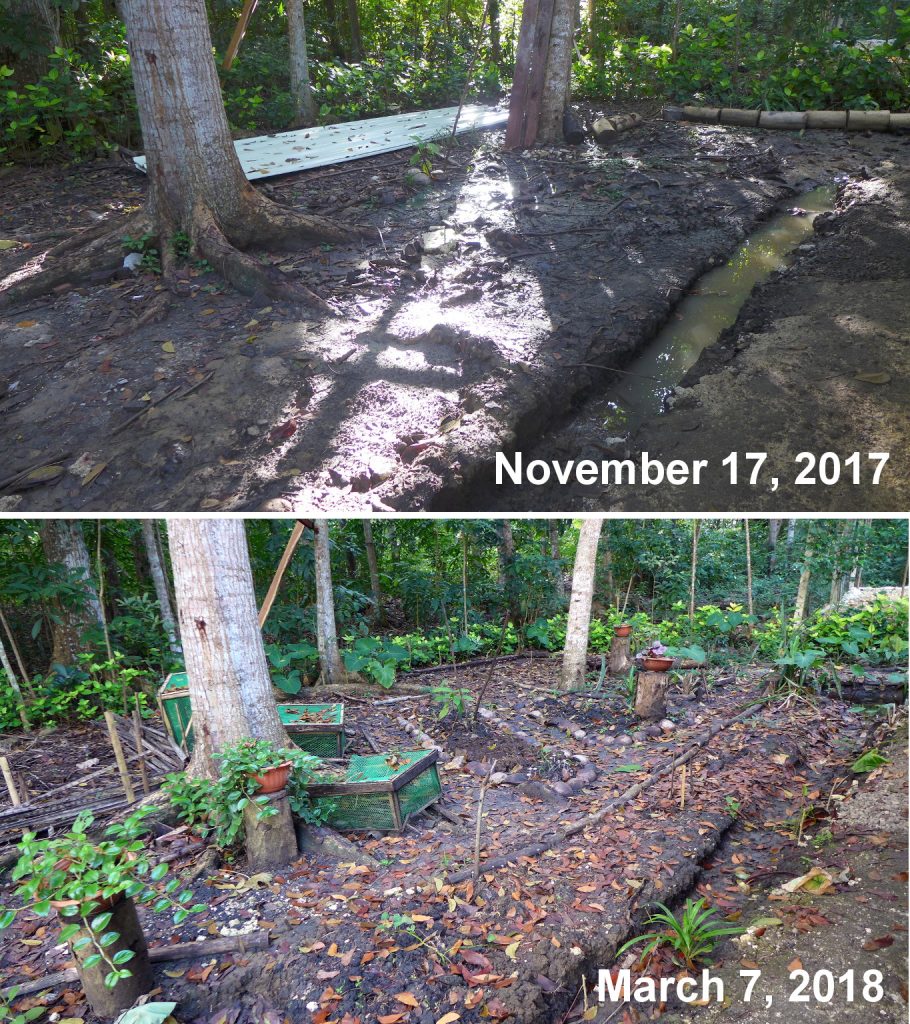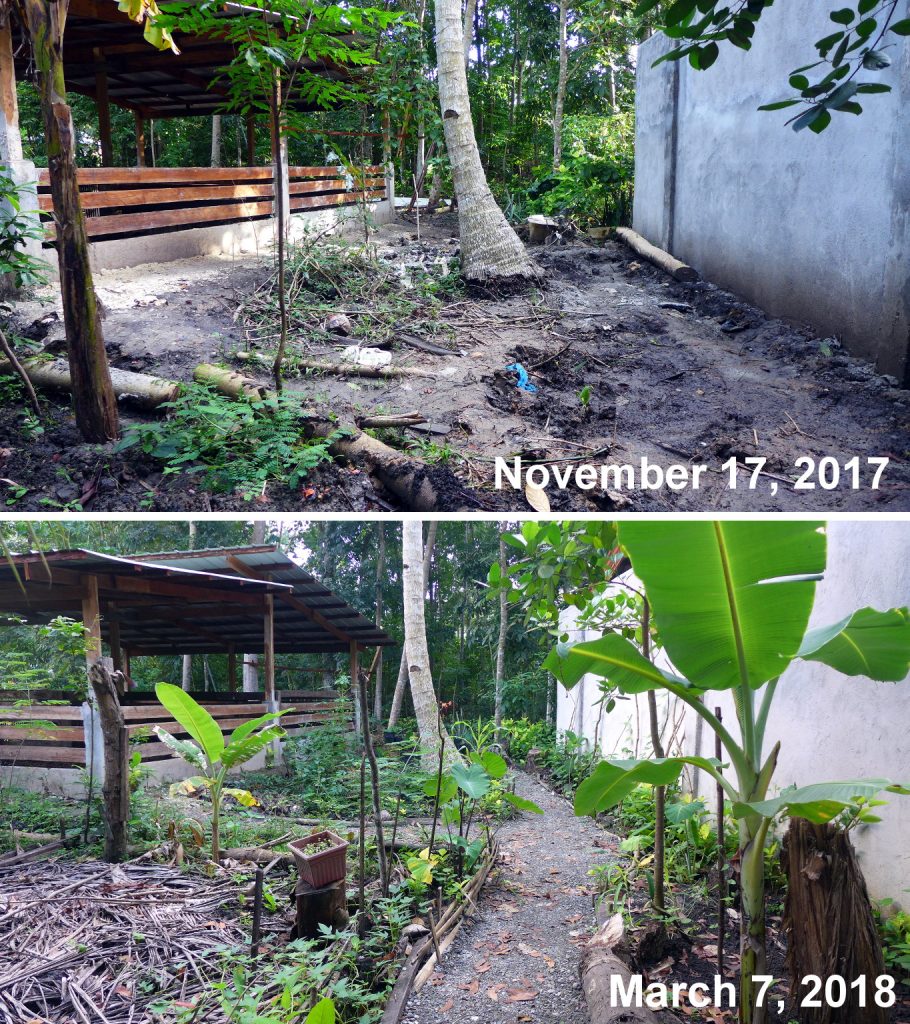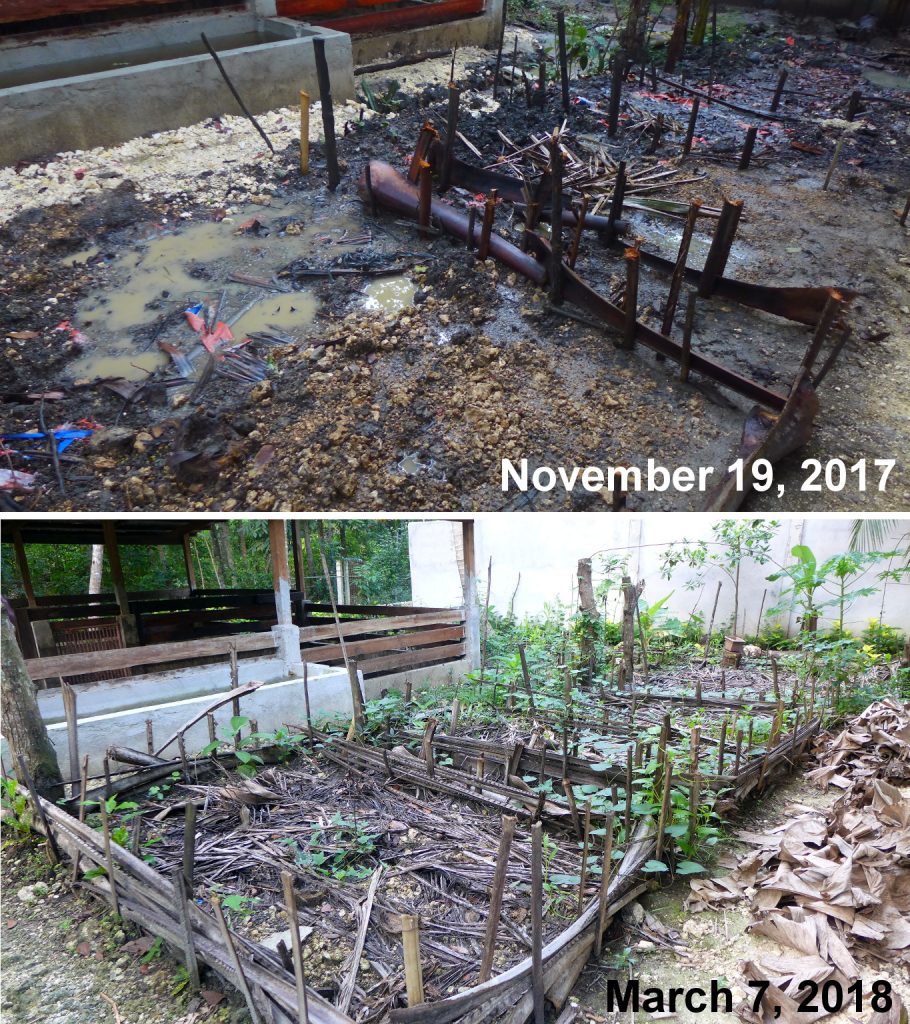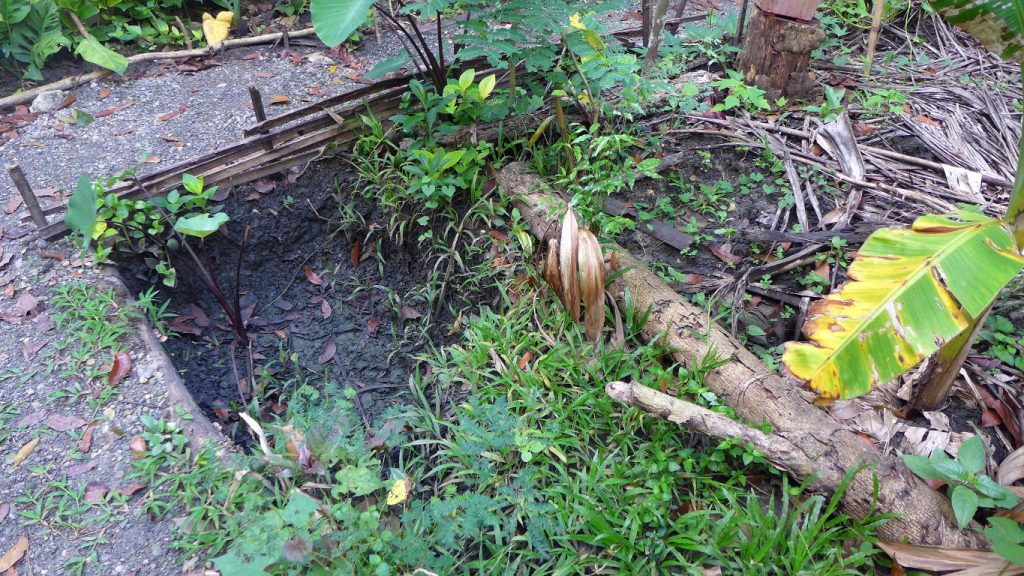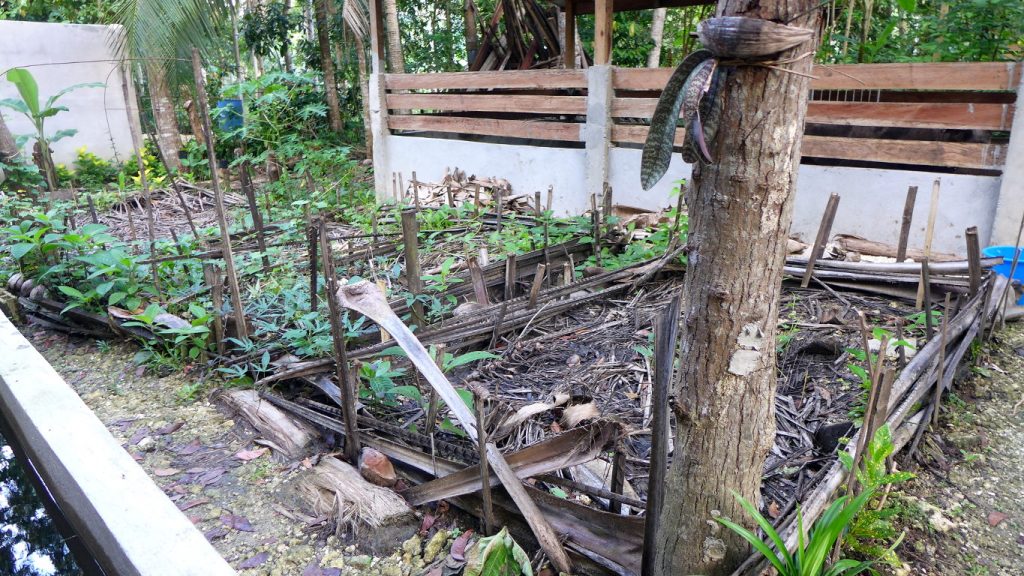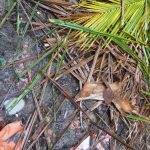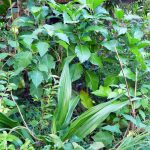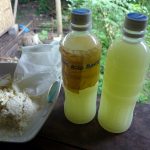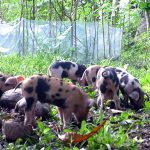This is sow Number 3 with her piglets some 2-3 hours after farrowing. She gave birth to 9 piglets, no mummified fetus, no stillborn. This is great news because she was infected with PPV (porcine parvovirus) on her previous farrowing. We have a small herd of pigs and therefore do not follow a vaccination program. Furthermore, natural exposure to PPV is followed by lifelong immunity whereas vaccination wanes over time.
Parity 2: Porcine Parvovirus, August 29, 2017
From 8-9PM last night, Number 3 farrowed to 2 stillborn piglets and 6 mummified fetuses. Our suspicion is Porcine Parvovirus (PPV). The prolonged gestation period of 117 days was a sign that something wasn’t right. Note also that a few weeks into gestation, Number 3 had a slightly bloody discharge for several days. This could’ve been an early sign of infection.
The mummified fetuses are of varying lengths indicating that PPV is the infectious agent since the virus attacks one fetus at a time, progressively, and the first fetuses to be infected may be reabsorbed into the sow’s body. However, fetuses infected after 70 days gestation are able to protect itself from the virus. Immuno-competence of fetuses start at 55-70 days.
Keeping an eye on Number 3 at the moment, hoping that she has expelled all the fetuses and the afterbirth, and that no severe infection will set in. She looks quite well, she is eating and drinking and walks about and rests peacefully. But she is very tired, and infection will surely set in, and her teats will become painful in the absence of suckling piglets. She has had oxytocin and penicillin. We don’t use these (or any) drugs in normal farrowing.
Number 3 appears to grieve the death of her piglets. She looks at them and makes gentle calling sounds. She lies down and grunts to call her piglets to suckle. She snuggles her snout close to the dead piglet while she sleeps.
Although we are no stranger to livestock loses, we are hoping that Number 3 will recover. We will breed her again when she is ready. The good news is that pigs exposed to PPV often remain immune for the rest of their lives.
Where did the PPV come from?
Our first incidence of possible PPV infection was with sow Number 1, her second parity of 11 live piglets, 1 stillborn piglet and 1 mummified fetus. This was on December 30, 2016, just 5 months before Number 3 was serviced by boar Pinky.
Our suspicion is that PPV was transmitted to sow Number 1 via artificial insemination on her second parity. She had no PPV infection on her first parity via our boar Bootleg. Number 1 gave birth to 11 live piglets and 1 stillborn, the stillborn possibly due to prolonged farrowing. There were no obvious signs of PPV infection. Boar Pinky was from this first litter.
However, since boar Pinky stayed in close proximity to his mother he could’ve been infected by PPV and may even be an immuno-tolerant carrier. Boar Pinky may have infected sow Number 3 during service.
As a gilt, Auntie Brownie stayed in close proximity to sow Number 1 and boar Pinky. We are hoping that this has exposed Brownie to PPV and has developed lifelong immunity. Her first parity of 11 live piglets and 1 stillborn on June 24, 2017 showed no obvious signs of PPV infection. We are hoping that her second litter, due January 21, 2018, will be protected from the disastrous effects of PPV infection.
Update (January 19, 2018):
Auntie Brownie farrowed on June 19, 2018 to 10 live piglets. No stillborn piglets and no mummified fetuses. This means Auntie Brownie is most possibly immune from PPV.
It is becoming more clear that the PPV came from artificial insemination (from a farm in another municipality). Since she was a gilt, Number 3 is housed separately (about 12 meters/40 feet away) from Auntie Brownie and boar Pinky, thus, she was the most susceptible.
Number 3 is about 2 months pregnant and is due on the first week of March. If she was indeed infected with PPV, she should no longer have any problems with the virus. Fingers crossed!
Update (March 9, 2018):
From 12-1:30pm, March 9, 2018, Friday, Number 3 farrowed to 9 live piglets. No stillborn piglets and no mummified fetuses.


